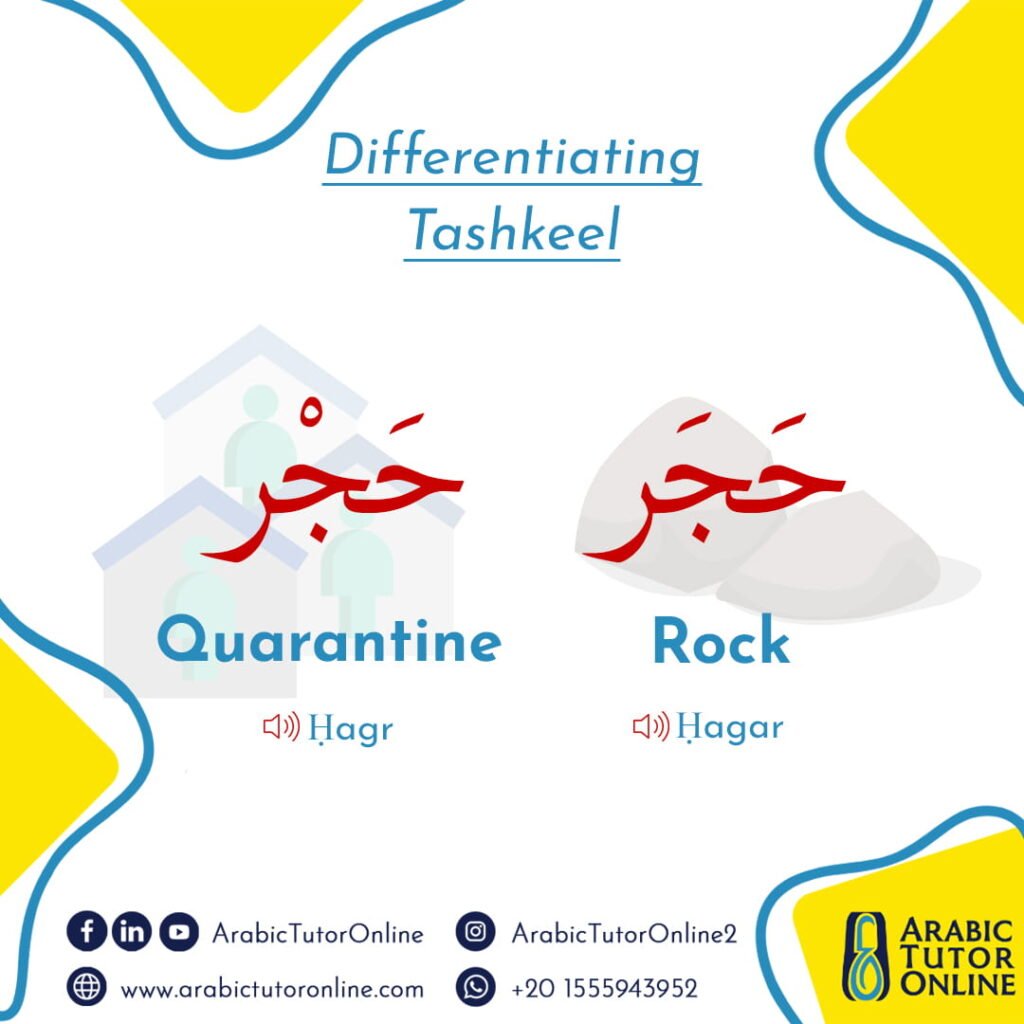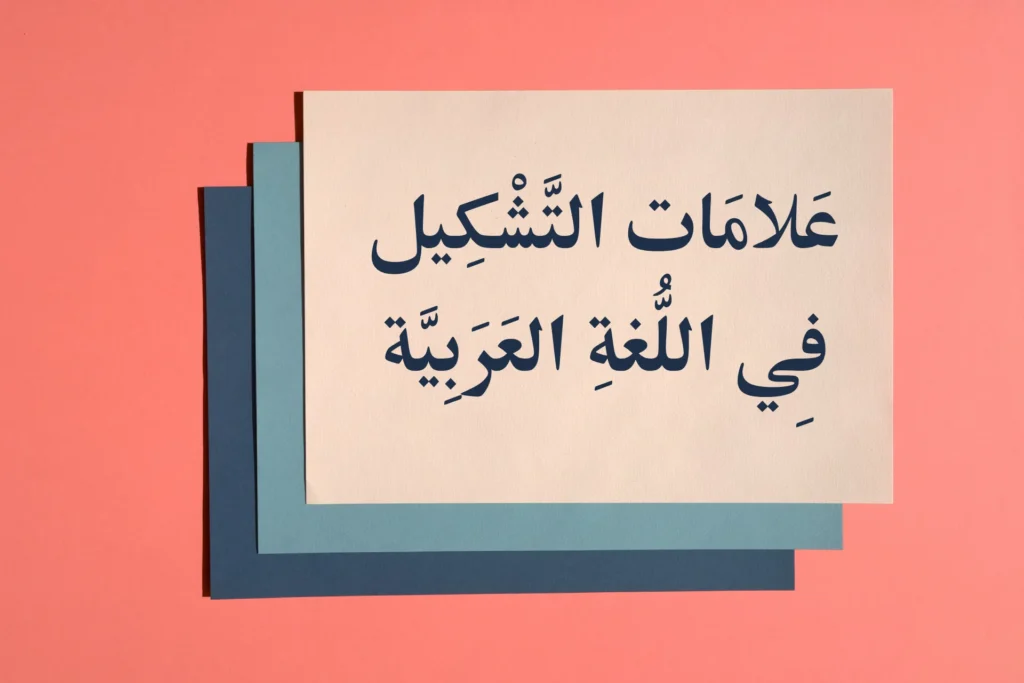Have you ever been captivated by the beauty of the Arabic script? Perhaps you’re intrigued by the rich cultural heritage of the Middle East and North Africa (MENA) region ([where do Arabs live]), or maybe you’re simply looking to expand your linguistic horizons. Whatever your reason, venturing into the world of Arabic promises a rewarding journey. But before you dive headfirst into deciphering those elegant characters, there’s a crucial element you need to understand: Arabic diacritics, also known as harakat (حركات) in Arabic.
Think of diacritics as tiny symbols that dance around Arabic letters, adding a layer of precision to their pronunciation. Just like how an accent mark can transform a simple “e” into the elegant “é” in French, diacritical marks in Arabic (also referred to as Arabic diacritical marks or vowel marks in Arabic or Arabic accent marks) play a vital role in distinguishing between words that might otherwise appear identical. Mastering these little markings unlocks the true depths of the Arabic language, allowing you to not only pronounce words accurately but also grasp their subtle nuances.
Table of Contents
What are Arabic Diacritics?
Arabic diacritics are visual symbols added to letters that guide pronunciation and enhance understanding. These small yet powerful marks can change the meaning of a word entirely, making them indispensable in reading, writing, and speaking Arabic. Just like punctuation in English, diacritics in Arabic play a vital role in conveying the correct message.
The Role of Harakat in Arabic

Harakat, a subset of Arabic diacritics, are used to indicate short vowels. In the Arabic language, vowels are not typically written as separate letters. Instead, they are represented by these diacritical marks. The primary Harakat in Arabic are:
- Fatha (ـَ): Indicates a short “a” sound.
- Kasra (ـِ): Indicates a short “i” sound.
- Damma (ـُ): Indicates a short “u” sound.
These marks are essential for beginners as they provide clues on how to pronounce words correctly.
Types of Arabic Diacritical Marks

Arabic diacritical marks can be broadly classified into three categories: Harakat, Shadda, and Tanween.
Harakat Arabic
Harakat, as mentioned earlier, include Fatha, Kasra, and Damma. These marks are placed above or below the letters to indicate the correct vowel sounds. Let’s check them in detail:
- Fatha: The Fatha is a small diagonal line placed above a letter. It creates a short “a” sound, which is essential in distinguishing between different words. For example, the word “كتبَ” (wrote) with Fatha would be pronounced “kataba.”
- Kasra: The Kasra is a small diagonal line placed below a letter, creating a short “i” sound. This mark is crucial for proper pronunciation, as a slight change in vowel sound can alter the meaning of a word. For example, “كتبِ” (books) with Kasra would be pronounced “kutubi.”
- Damma: The Damma is a small loop placed above a letter, producing a short “u” sound. It helps in differentiating words that might otherwise look identical. For instance, “كتبُ” (books) with Damma would be pronounced “kutubu.”
Shadda in Arabic
The Shadda (ـّ) is another important diacritical mark. It indicates the doubling of a consonant. For example, the word “يُفَكِّر” (Think) with a Shadda on the “ك” would be pronounced “Yufakker” emphasizing the “k” sound.
Tanween
Tanween are diacritical marks used to indicate the indefinite articles in Arabic. They come in three forms:
- Fathatayn (ـً): Indicates an indefinite noun with a short “an” sound. For example, on the letter (ب) in the word (كتابًا).
- Kasratayn (ـٍ): Indicates an indefinite noun with a short “in” sound. For example, on the letter (ب) in the word (كتابٍ).
- Dammatayn (ـٌ): Indicates an indefinite noun with a short “un” sound. For example, on the letter (ب) in the word (كتابٌ).
Sukun: Silent Letters
The Sukun (ـْ) is a small circle placed above a letter, indicating that the consonant is to be pronounced without any vowel sound following it. This mark is crucial for proper pronunciation, especially in complex words. For example, on the letter (ب) in the word (كتابْ).
Importance of Arabic Diacritics
Now, you might be wondering: “Are these diacritics absolutely necessary?” While some argue that modern Arabic communication often forgoes diacritics for brevity’s sake, especially in informal settings, understanding Arabic with harakat offers numerous benefits. Here’s why:
- Accurate Pronunciation: Diacritics are the key to unlocking the melodic beauty of spoken Arabic. Without them, you risk mispronouncing words entirely, potentially leading to misunderstandings. Imagine trying to have a conversation in English where “ship” and “sheep” sound the same – that’s the challenge you face without diacritics in Arabic.
Then, they aid in accurate Arabic pronunciation, which is essential for effective communication. In addition, they help differentiate between words that may look similar but have different meanings. Lastly, they are vital for reading classical Arabic texts, such as the Quran, which are rich in diacritical marks.






- Deeper Understanding of Grammar: Diacritics often indicate grammatical function. For instance, the presence of a specific diacritic can reveal whether a noun is singular or plural, masculine or feminine. This knowledge becomes essential as you delve deeper into Arabic grammar.
- A Gateway to Different Dialects: The Arabic language boasts a rich tapestry of dialects spoken across the vast MENA region. While Modern Standard Arabic (MSA) serves as the foundation for most learning materials, understanding diacritics empowers you to explore these diverse Arabic dialects where pronunciation and even some diacritic usage can vary.
- Appreciation for the Arabic Script: Diacritics are an integral part of the Arabic writing system. By mastering them, you gain a deeper appreciation for the intricate beauty and history of the Arabic script.
Learning Arabic with Diacritics
For non-native speakers, learning Arabic with diacritics can be incredibly beneficial. These marks provide a roadmap for pronunciation and help in building a strong foundation in the language. Various online resources and courses focus on teaching Arabic with diacritics, making it easier for learners to grasp the nuances of the language. Check out our offline and online Arabic courses for Modern Standard Arabic and colloquial Arabic dialects for all levels.
The Cultural Significance of Arabic Diacritics
In addition to their linguistic importance, Arabic diacritics hold cultural significance. They are an integral part of Arab culture and the middle eastern culture, reflecting the rich history and traditions of the Arabic countries. Mastering diacritics can thus deepen your appreciation of the Arabic language and its cultural context.
Tips & Tricks for Learning Arabic Diacritics
1. Focus on the Fundamentals:
Don’t overwhelm yourself! Start by concentrating on the three main harakat:
- Fathah (فتحة)
- Damma (ضمة)
- Kasrah (كسرة)
Familiarize yourself with these symbols and practice associating them with their corresponding sounds.
2. Find Learning Resources:
The beauty of the digital age is the abundance of resources available at your fingertips! Use online platforms specifically designed to teach Arabic diacritics. Look for websites, apps, and even YouTube channels that offer interactive exercises, audio lessons, and visual aids to solidify your understanding.
3. Keep Active Learning:
Don’t just passively read about diacritics. Actively engage with the learning process. Here are some effective methods:
- Write, Write, Write: Practice writing Arabic words with proper diacritics. This strengthens memorization and connection between the symbols and their sounds.
- Read Aloud: As you encounter words with diacritics in your learning materials, read them aloud. This not only helps with pronunciation but also trains your ear to recognize the different vowel sounds.
- Flashcards: Create flashcards with Arabic words on one side and their pronunciation with diacritics on the other. Test yourself regularly to gauge your progress.
4. Find a Learning Buddy:
Consider partnering with another Arabic learner or finding a language exchange partner or an Arabic tutor. Discussing diacritics and practicing pronunciation together can be a fun and motivating way to solidify your learning.
5. Celebrate Small Wins:
Learning a new language takes time and dedication. Don’t get discouraged by setbacks. Celebrate your small victories, like mastering a new diacritic or correctly pronouncing a word. This keeps you motivated and reinforces positive learning habits.
Remember: Consistency is key! By dedicating a short amount of time each day to practicing Arabic diacritics , you’ll be well on your way to mastering these essential markings and unlocking the true beauty of the Arabic language.

